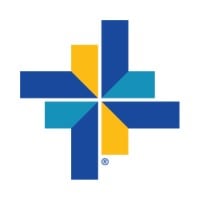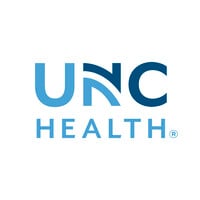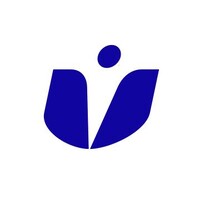
Nationwide Children's Hospital Company Cyber Security Posture
nationwidechildrens.orgNationwide Children’s is one of America's largest pediatric hospitals, an international leader in research and is ranked in all 10 specialties on U.S. News & World Report’s 2024-25 “America’s Best Children’s Hospitals” list. Our staff, comprised of 1,600 medical professionals and over 15,000 employees, provides state-of-the-art pediatric care for 1.8 million patient visits annually. And, according to the Children’s Hospital Association, Nationwide Children's is the #1 provider of pediatric surgery in the country. Our doctors represent every major pediatric sub-specialty. With over 50 locations throughout Ohio, signature programs include heart, cancer, gastroenterology and neonatology care, all of which are internationally recognized. Tim Robinson is CEO of Nationwide Children’s Hospital, which includes the Abigail Wexner Research Institute at Nationwide Children’s Hospital, Nationwide Children’s Hospital Foundation and The Center for Family Safety and Healing at Nationwide Children’s Hospital. As home to the Department of Pediatrics of The Ohio State University College of Medicine, Nationwide Children’s physicians train the next generation of pediatricians and pediatric specialists. The Abigail Wexner Research Institute at Nationwide Children’s Hospital is one of the Top 10 National Institutes of Health-funded freestanding pediatric research facilities. Nationwide Children’s remains true to the original mission since its founding in 1892 of providing care regardless of a family’s ability to pay. More information is available at NationwideChildrens.org.
NCH Company Details
nationwide-childrens-hospital
11600 employees
92494.0
62
Hospitals and Health Care
nationwidechildrens.org
80
NAT_1292488
In-progress
Between 900 and 1000
This score is AI-generated and less favored by cyber insurers, who prefer the TPRM score.
 NCH Global Score
NCH Global Score.png)

Nationwide Children's Hospital Company Scoring based on AI Models
| Model Name | Date | Description | Current Score Difference | Score |
|---|---|---|---|---|
| AVERAGE-Industry | 03-12-2025 | This score represents the average cybersecurity rating of companies already scanned within the same industry. It provides a benchmark to compare an individual company's security posture against its industry peers. | N/A | Between 900 and 1000 |
Nationwide Children's Hospital Company Cyber Security News & History
| Entity | Type | Severity | Impact | Seen | Url ID | Details | View |
|---|
Nationwide Children's Hospital Company Subsidiaries

Nationwide Children’s is one of America's largest pediatric hospitals, an international leader in research and is ranked in all 10 specialties on U.S. News & World Report’s 2024-25 “America’s Best Children’s Hospitals” list. Our staff, comprised of 1,600 medical professionals and over 15,000 employees, provides state-of-the-art pediatric care for 1.8 million patient visits annually. And, according to the Children’s Hospital Association, Nationwide Children's is the #1 provider of pediatric surgery in the country. Our doctors represent every major pediatric sub-specialty. With over 50 locations throughout Ohio, signature programs include heart, cancer, gastroenterology and neonatology care, all of which are internationally recognized. Tim Robinson is CEO of Nationwide Children’s Hospital, which includes the Abigail Wexner Research Institute at Nationwide Children’s Hospital, Nationwide Children’s Hospital Foundation and The Center for Family Safety and Healing at Nationwide Children’s Hospital. As home to the Department of Pediatrics of The Ohio State University College of Medicine, Nationwide Children’s physicians train the next generation of pediatricians and pediatric specialists. The Abigail Wexner Research Institute at Nationwide Children’s Hospital is one of the Top 10 National Institutes of Health-funded freestanding pediatric research facilities. Nationwide Children’s remains true to the original mission since its founding in 1892 of providing care regardless of a family’s ability to pay. More information is available at NationwideChildrens.org.
Access Data Using Our API

Get company history
.png)
NCH Cyber Security News
CrowdStrike outage disrupts services at Ohio BMV, Franklin County municipal court
CrowdStrike outage disrupts services at Ohio BMV, Franklin County municipal court · Hospitals impacted by outages, but appointments continue.
Nicklaus reflects on 50 years of the Memorial Tournament
DUBLIN, Ohio — It's a big weekend for golf in Ohio as the 50th Memorial Tournament kicks off in Dublin. What You Need To Know ...
‘Cybersecurity incident’ may affect families who have gone to Dayton Children’s Hospital
A “cybersecurity incident” may have affected some families who have gone to Dayton Children's Hospital, according to a statement from UnitedHealth Group Media.
Hospitals are under digital siege, and it’s a national security threat
In the last year, over 380 U.S. hospitals have been hit by cyberattacks. Some were ransomware. Others took down entire hospital networks.
UPDATE: CPS Solutions Data Breach Affects Patients at Various Hospitals Nationwide
CPS Solutions has confirmed that patients of multiple healthcare providers were affected by the recent incident, including Dayton Children's Hospital, Beacon ...
At least 12 major hospitals, health systems affected by global IT outage
At least 12 major hospitals, health systems affected by global IT outage. Some hospitals opted to cancel elective and non-emergency surgeries.
Lurie Children's Hospital says nearly 800K patients' data compromised in cyberattack
Lurie Children's Hospital of Chicago sent out data breach letters to about 792,000 people warning them of cybercriminals' potential access ...
Cyber outage forces radiologists to transcribe reports, delay nonurgent cases
A cyber outage on Friday forced radiologists at one hospital system to transcribe their reports and delay nonurgent cases, according to ...
Nearly 800,000 affected by children’s hospital ransomware attack
The Rhysida ransomware group claims to be behind the attack. These cybercriminals accessed the hospital's systems between January 26 and 31, ...

NCH Similar Companies

Region Skåne
Region Skåne, or Skåne Regional Council, is the self-governing authority of Skåne, the southernmost county of Sweden. Region Skåne has its head office in the city of Kristianstad and has work places in every municipality in Skåne. Region Skåne is responsible for healthcare and medical services, t

Baylor Scott & White Health
With us by your side, there's no stopping you. It's why we're creating a new kind of healthcare at Baylor Scott & White. And we're just getting started. As the largest not-for-profit health system in the state of Texas, Baylor Scott & White promotes the health and well-being of every individual, fa

Rush University Medical Center
Rush University Medical Center is an academic medical center that includes a 671-bed hospital serving adults and children, the 61-bed Johnston R. Bowman Health Center and Rush University. Rush University is home to one of the first medical colleges in the Midwest and one of the nation's top-ranked n

Lourdes Medical Associates
At Virtua Health, we exist for one reason – to better serve you. That means being here for you in all the moments that matter, striving each day to connect you to the care you need. Whether that's wellness and prevention, experienced specialists, life-changing care, or something in-between – we are

UNC Health
Our mission is to improve the health and well-being of North Carolinians and others whom we serve. We accomplish this by providing leadership and excellence in the interrelated areas of patient care, education and research. UNC Health and its 33,000 employees, continue to serve as North Carolina’s

UMass Memorial Health
UMass Memorial Health is the health and wellness partner of the people of Central Massachusetts. Through pain and pandemics, our commitment to our communities never wanes. We use knowledge and innovation to create breakthrough medicine, to create jobs, and to make life better for those we serve. We

Frequently Asked Questions (FAQ) on Cybersecurity Incidents
NCH CyberSecurity History Information
Total Incidents: According to Rankiteo, NCH has faced 0 incidents in the past.
Incident Types: As of the current reporting period, NCH has not encountered any cybersecurity incidents.
Total Financial Loss: The total financial loss from these incidents is estimated to be {total_financial_loss}.
Cybersecurity Posture: The company's overall cybersecurity posture is described as Nationwide Children’s is one of America's largest pediatric hospitals, an international leader in research and is ranked in all 10 specialties on U.S. News & World Report’s 2024-25 “America’s Best Children’s Hospitals” list. Our staff, comprised of 1,600 medical professionals and over 15,000 employees, provides state-of-the-art pediatric care for 1.8 million patient visits annually. And, according to the Children’s Hospital Association, Nationwide Children's is the #1 provider of pediatric surgery in the country. Our doctors represent every major pediatric sub-specialty. With over 50 locations throughout Ohio, signature programs include heart, cancer, gastroenterology and neonatology care, all of which are internationally recognized. Tim Robinson is CEO of Nationwide Children’s Hospital, which includes the Abigail Wexner Research Institute at Nationwide Children’s Hospital, Nationwide Children’s Hospital Foundation and The Center for Family Safety and Healing at Nationwide Children’s Hospital. As home to the Department of Pediatrics of The Ohio State University College of Medicine, Nationwide Children’s physicians train the next generation of pediatricians and pediatric specialists. The Abigail Wexner Research Institute at Nationwide Children’s Hospital is one of the Top 10 National Institutes of Health-funded freestanding pediatric research facilities. Nationwide Children’s remains true to the original mission since its founding in 1892 of providing care regardless of a family’s ability to pay. More information is available at NationwideChildrens.org..
Detection and Response: The company detects and responds to cybersecurity incidents through {description_of_detection_and_response_process}.
Incident Details
Incident 1: Ransomware Attack
Title: {Incident_Title}
Description: {Brief_description_of_the_incident}
Date Detected: {Detection_Date}
Date Publicly Disclosed: {Disclosure_Date}
Date Resolved: {Resolution_Date}
Type: {Type_of_Attack}
Attack Vector: {Attack_Vector}
Vulnerability Exploited: {Vulnerability}
Threat Actor: {Threat_Actor}
Motivation: {Motivation}
Incident 2: Data Breach
Title: {Incident_Title}
Description: {Brief_description_of_the_incident}
Date Detected: {Detection_Date}
Date Publicly Disclosed: {Disclosure_Date}
Date Resolved: {Resolution_Date}
Type: {Type_of_Attack}
Attack Vector: {Attack_Vector}
Vulnerability Exploited: {Vulnerability}
Threat Actor: {Threat_Actor}
Motivation: {Motivation}
Common Attack Types: As of now, the company has not encountered any reported incidents involving common cyberattacks.
Identification of Attack Vectors: The company identifies the attack vectors used in incidents through {description_of_identification_process}.
Impact of the Incidents
Incident 1: Ransomware Attack
Financial Loss: {Financial_Loss}
Data Compromised: {Data_Compromised}
Systems Affected: {Systems_Affected}
Downtime: {Downtime}
Operational Impact: {Operational_Impact}
Conversion Rate Impact: {Conversion_Rate_Impact}
Revenue Loss: {Revenue_Loss}
Customer Complaints: {Customer_Complaints}
Brand Reputation Impact: {Brand_Reputation_Impact}
Legal Liabilities: {Legal_Liabilities}
Identity Theft Risk: {Identity_Theft_Risk}
Payment Information Risk: {Payment_Information_Risk}
Incident 2: Data Breach
Financial Loss: {Financial_Loss}
Data Compromised: {Data_Compromised}
Systems Affected: {Systems_Affected}
Downtime: {Downtime}
Operational Impact: {Operational_Impact}
Conversion Rate Impact: {Conversion_Rate_Impact}
Revenue Loss: {Revenue_Loss}
Customer Complaints: {Customer_Complaints}
Brand Reputation Impact: {Brand_Reputation_Impact}
Legal Liabilities: {Legal_Liabilities}
Identity Theft Risk: {Identity_Theft_Risk}
Payment Information Risk: {Payment_Information_Risk}
Average Financial Loss: The average financial loss per incident is {average_financial_loss}.
Commonly Compromised Data Types: The types of data most commonly compromised in incidents are {list_of_commonly_compromised_data_types}.
Incident 1: Ransomware Attack
Entity Name: {Entity_Name}
Entity Type: {Entity_Type}
Industry: {Industry}
Location: {Location}
Size: {Size}
Customers Affected: {Customers_Affected}
Incident 2: Data Breach
Entity Name: {Entity_Name}
Entity Type: {Entity_Type}
Industry: {Industry}
Location: {Location}
Size: {Size}
Customers Affected: {Customers_Affected}
Response to the Incidents
Incident 1: Ransomware Attack
Incident Response Plan Activated: {Yes/No}
Third Party Assistance: {Yes/No}
Law Enforcement Notified: {Yes/No}
Containment Measures: {Containment_Measures}
Remediation Measures: {Remediation_Measures}
Recovery Measures: {Recovery_Measures}
Communication Strategy: {Communication_Strategy}
Adaptive Behavioral WAF: {Adaptive_Behavioral_WAF}
On-Demand Scrubbing Services: {On_Demand_Scrubbing_Services}
Network Segmentation: {Network_Segmentation}
Enhanced Monitoring: {Enhanced_Monitoring}
Incident 2: Data Breach
Incident Response Plan Activated: {Yes/No}
Third Party Assistance: {Yes/No}
Law Enforcement Notified: {Yes/No}
Containment Measures: {Containment_Measures}
Remediation Measures: {Remediation_Measures}
Recovery Measures: {Recovery_Measures}
Communication Strategy: {Communication_Strategy}
Adaptive Behavioral WAF: {Adaptive_Behavioral_WAF}
On-Demand Scrubbing Services: {On_Demand_Scrubbing_Services}
Network Segmentation: {Network_Segmentation}
Enhanced Monitoring: {Enhanced_Monitoring}
Incident Response Plan: The company's incident response plan is described as {description_of_incident_response_plan}.
Third-Party Assistance: The company involves third-party assistance in incident response through {description_of_third_party_involvement}.
Data Breach Information
Incident 2: Data Breach
Type of Data Compromised: {Type_of_Data}
Number of Records Exposed: {Number_of_Records}
Sensitivity of Data: {Sensitivity_of_Data}
Data Exfiltration: {Yes/No}
Data Encryption: {Yes/No}
File Types Exposed: {File_Types}
Personally Identifiable Information: {Yes/No}
Prevention of Data Exfiltration: The company takes the following measures to prevent data exfiltration: {description_of_prevention_measures}.
Handling of PII Incidents: The company handles incidents involving personally identifiable information (PII) through {description_of_handling_process}.
Ransomware Information
Incident 1: Ransomware Attack
Ransom Demanded: {Ransom_Amount}
Ransom Paid: {Ransom_Paid}
Ransomware Strain: {Ransomware_Strain}
Data Encryption: {Yes/No}
Data Exfiltration: {Yes/No}
Ransom Payment Policy: The company's policy on paying ransoms in ransomware incidents is described as {description_of_ransom_payment_policy}.
Data Recovery from Ransomware: The company recovers data encrypted by ransomware through {description_of_data_recovery_process}.
Regulatory Compliance
Incident 1: Ransomware Attack
Regulations Violated: {Regulations_Violated}
Fines Imposed: {Fines_Imposed}
Legal Actions: {Legal_Actions}
Regulatory Notifications: {Regulatory_Notifications}
Incident 2: Data Breach
Regulations Violated: {Regulations_Violated}
Fines Imposed: {Fines_Imposed}
Legal Actions: {Legal_Actions}
Regulatory Notifications: {Regulatory_Notifications}
Regulatory Frameworks: The company complies with the following regulatory frameworks regarding cybersecurity: {list_of_regulatory_frameworks}.
Ensuring Regulatory Compliance: The company ensures compliance with regulatory requirements through {description_of_compliance_measures}.
Lessons Learned and Recommendations
Incident 1: Ransomware Attack
Lessons Learned: {Lessons_Learned}
Incident 2: Data Breach
Lessons Learned: {Lessons_Learned}
Incident 1: Ransomware Attack
Recommendations: {Recommendations}
Incident 2: Data Breach
Recommendations: {Recommendations}
Key Lessons Learned: The key lessons learned from past incidents are {list_of_key_lessons_learned}.
Implemented Recommendations: The company has implemented the following recommendations to improve cybersecurity: {list_of_implemented_recommendations}.
References
Additional Resources: Stakeholders can find additional resources on cybersecurity best practices at {list_of_additional_resources}.
Investigation Status
Incident 1: Ransomware Attack
Investigation Status: {Investigation_Status}
Incident 2: Data Breach
Investigation Status: {Investigation_Status}
Communication of Investigation Status: The company communicates the status of incident investigations to stakeholders through {description_of_communication_process}.
Stakeholder and Customer Advisories
Incident 1: Ransomware Attack
Stakeholder Advisories: {Stakeholder_Advisories}
Customer Advisories: {Customer_Advisories}
Incident 2: Data Breach
Stakeholder Advisories: {Stakeholder_Advisories}
Customer Advisories: {Customer_Advisories}
Advisories Provided: The company provides the following advisories to stakeholders and customers following an incident: {description_of_advisories_provided}.
Initial Access Broker
Incident 1: Ransomware Attack
Entry Point: {Entry_Point}
Reconnaissance Period: {Reconnaissance_Period}
Backdoors Established: {Backdoors_Established}
High Value Targets: {High_Value_Targets}
Data Sold on Dark Web: {Yes/No}
Incident 2: Data Breach
Entry Point: {Entry_Point}
Reconnaissance Period: {Reconnaissance_Period}
Backdoors Established: {Backdoors_Established}
High Value Targets: {High_Value_Targets}
Data Sold on Dark Web: {Yes/No}
Monitoring and Mitigation of Initial Access Brokers: The company monitors and mitigates the activities of initial access brokers through {description_of_monitoring_and_mitigation_measures}.
Post-Incident Analysis
Incident 1: Ransomware Attack
Root Causes: {Root_Causes}
Corrective Actions: {Corrective_Actions}
Incident 2: Data Breach
Root Causes: {Root_Causes}
Corrective Actions: {Corrective_Actions}
Post-Incident Analysis Process: The company's process for conducting post-incident analysis is described as {description_of_post_incident_analysis_process}.
Corrective Actions Taken: The company has taken the following corrective actions based on post-incident analysis: {list_of_corrective_actions_taken}.
Additional Questions
General Information
Ransom Payment History: The company has {paid/not_paid} ransoms in the past.
Last Ransom Demanded: The amount of the last ransom demanded was {last_ransom_amount}.
Last Attacking Group: The attacking group in the last incident was {last_attacking_group}.
Incident Details
Most Recent Incident Detected: The most recent incident detected was on {most_recent_incident_detected_date}.
Most Recent Incident Publicly Disclosed: The most recent incident publicly disclosed was on {most_recent_incident_publicly_disclosed_date}.
Most Recent Incident Resolved: The most recent incident resolved was on {most_recent_incident_resolved_date}.
Impact of the Incidents
Highest Financial Loss: The highest financial loss from an incident was {highest_financial_loss}.
Most Significant Data Compromised: The most significant data compromised in an incident was {most_significant_data_compromised}.
Most Significant System Affected: The most significant system affected in an incident was {most_significant_system_affected}.
Response to the Incidents
Third-Party Assistance in Most Recent Incident: The third-party assistance involved in the most recent incident was {third_party_assistance_in_most_recent_incident}.
Containment Measures in Most Recent Incident: The containment measures taken in the most recent incident were {containment_measures_in_most_recent_incident}.
Data Breach Information
Most Sensitive Data Compromised: The most sensitive data compromised in a breach was {most_sensitive_data_compromised}.
Number of Records Exposed: The number of records exposed in the most significant breach was {number_of_records_exposed}.
Ransomware Information
Highest Ransom Demanded: The highest ransom demanded in a ransomware incident was {highest_ransom_demanded}.
Highest Ransom Paid: The highest ransom paid in a ransomware incident was {highest_ransom_paid}.
Regulatory Compliance
Highest Fine Imposed: The highest fine imposed for a regulatory violation was {highest_fine_imposed}.
Most Significant Legal Action: The most significant legal action taken for a regulatory violation was {most_significant_legal_action}.
Lessons Learned and Recommendations
Most Significant Lesson Learned: The most significant lesson learned from past incidents was {most_significant_lesson_learned}.
Most Significant Recommendation Implemented: The most significant recommendation implemented to improve cybersecurity was {most_significant_recommendation_implemented}.
References
Most Recent Source: The most recent source of information about an incident is {most_recent_source}.
Most Recent URL for Additional Resources: The most recent URL for additional resources on cybersecurity best practices is {most_recent_url}.
Investigation Status
Current Status of Most Recent Investigation: The current status of the most recent investigation is {current_status_of_most_recent_investigation}.
Stakeholder and Customer Advisories
Most Recent Stakeholder Advisory: The most recent stakeholder advisory issued was {most_recent_stakeholder_advisory}.
Most Recent Customer Advisory: The most recent customer advisory issued was {most_recent_customer_advisory}.
Initial Access Broker
Most Recent Entry Point: The most recent entry point used by an initial access broker was {most_recent_entry_point}.
Most Recent Reconnaissance Period: The most recent reconnaissance period for an incident was {most_recent_reconnaissance_period}.
Post-Incident Analysis
Most Significant Root Cause: The most significant root cause identified in post-incident analysis was {most_significant_root_cause}.
Most Significant Corrective Action: The most significant corrective action taken based on post-incident analysis was {most_significant_corrective_action}.
What Do We Measure?
















Every week, Rankiteo analyzes billions of signals to give organizations a sharper, faster view of emerging risks. With deeper, more actionable intelligence at their fingertips, security teams can outpace threat actors, respond instantly to Zero-Day attacks, and dramatically shrink their risk exposure window.
These are some of the factors we use to calculate the overall score:
Identify exposed access points, detect misconfigured SSL certificates, and uncover vulnerabilities across the network infrastructure.
Gain visibility into the software components used within an organization to detect vulnerabilities, manage risk, and ensure supply chain security.
Monitor and manage all IT assets and their configurations to ensure accurate, real-time visibility across the company's technology environment.
Leverage real-time insights on active threats, malware campaigns, and emerging vulnerabilities to proactively defend against evolving cyberattacks.




